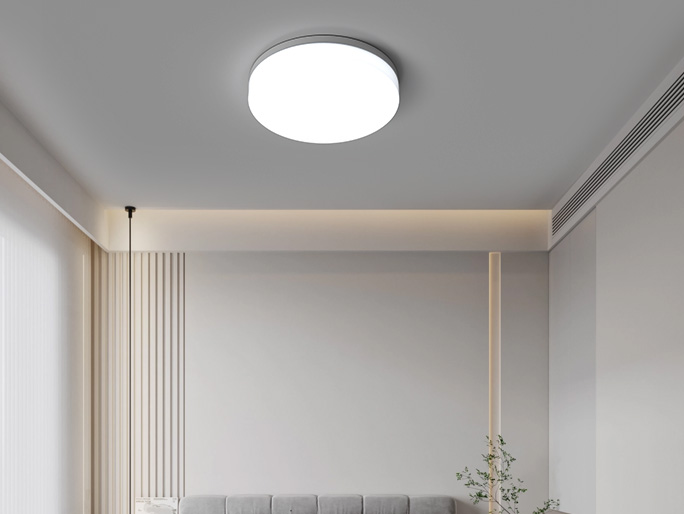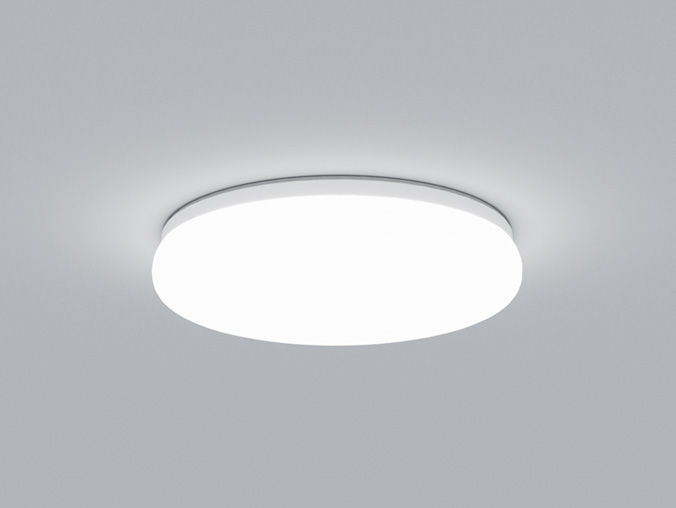

Yes, room ceiling light absolutely needs to match the room’s overall color temperature—this coordination directly affects the space’s ambiance, visual comfort, and even emotional state. The “room’s color temperature” refers to the warm/cool tone of its decor (walls, furniture, flooring) and natural light; a mismatched room ceiling light (e.g., cool white light in a warm-toned bedroom) will create visual conflict, making the space feel disjointed or uncomfortable. As a professional lighting brand, IMIGY’s Halo Ceiling Lights (adjustable color temperature round ceiling light) and Bean Ceiling Lights (fixed warm-toned room roof light) are engineered to align with different room color palettes, ensuring cohesive, pleasant lighting. Below is a detailed breakdown of why matching matters, product advantages, and practical tips.
1. Why Matching Room Ceiling Light to Color Temperature Is Critical
a. Enhances Ambiance Consistency
Warm-toned rooms (wooden furniture, beige walls, warm curtains) require warm white room ceiling light (2700K–3000K) to reinforce coziness. IMIGY’s Bean Ceiling Lights (fixed 2700K) are ideal for such spaces—their soft warm glow complements wooden beds in bedrooms or oak dining tables in kitchens, avoiding the “cold contrast” of cool white light. A user with a warm-toned bedroom noted: “The Bean light’s 2700K matches my wooden wardrobe perfectly—my room feels like a cozy retreat, not a stark space.”
Cool-toned rooms (gray walls, stainless steel furniture, large windows) need cool white room ceiling light (4000K–5000K) to maintain a modern, bright vibe. IMIGY’s Halo series can adjust to 5000K, pairing seamlessly with cool decor in home offices or bathrooms.
b. Improves Visual Comfort
Mismatched color temperatures cause eye strain: for example, a cool white round led ceiling light (5000K) in a warm-toned living room will make colors look distorted (e.g., wooden floors appear grayish). A matched room ceiling light ensures colors look true-to-life—Halo’s adjustable color temperature (2700K–5000K) lets you tweak the light to match decor, so furniture, art, and textiles retain their intended hues. This is especially important for spaces where color accuracy matters (e.g., bedrooms with colored bedding, living rooms with artwork).
2. IMIGY Products’ Advantages for Color Temperature Matching

a. Halo Ceiling Lights (Adjustable for Versatility)
Wide Color Temperature Range: As a round led ceiling light, Halo supports 2700K–5000K adjustable color temperature—one fixture can match multiple room styles. For example, use 2700K in a warm-toned bedroom, then adjust to 4000K if you repaint the walls gray later. This eliminates the need to buy a new room ceiling light when redecorating, saving money long-term.
Smart Sync with Natural Light: Halo can connect to smart controls to adjust color temperature with natural light (e.g., 3000K in the morning, 5000K at noon, 2700K in the evening). This ensures the roof lights for ceiling always align with the room’s natural color tone, maintaining comfort throughout the day.

b. Bean Ceiling Lights (Fixed Warm Tone for Coziness)
Calibrated Warm Glow: Bean’s fixed 2700K warm light is precisely calibrated to complement most residential warm decor (wood, beige, terracotta). Its soft output doesn’t overpower small spaces—ideal for bedrooms or entryways where coziness is key. Unlike generic warm-toned room roof light (which may have a yellowish tint), Bean’s light is warm but clear, avoiding a “dim” look.
Compact Design for Small Rooms: The small size of Bean (25cm diameter) makes it a versatile round ceiling light for small warm-toned spaces (e.g., 10㎡ bedrooms). It fits easily in low ceilings and pairs with other warm-toned fixtures (e.g., bedside lamps) without creating color conflict.
3. Practical Tips to Match Room Ceiling Light to Color Temperature
a. Identify the Room’s Dominant Tone First
Before choosing a room ceiling light, determine if the room is warm-dominant (wood, warm paint, natural materials) or cool-dominant (cool paint, metal, glass). Warm rooms need 2700K–3000K (Bean is perfect), while cool rooms need 4000K–5000K (Halo adjusted to 5000K works best). For neutral rooms (white, beige), Halo’s adjustable range lets you switch between tones based on mood.
b. Avoid Mixing Too Many Tones
Limit the number of color temperatures in one room: pair a matched room ceiling light with 1–2 other fixtures (e.g., bedside lamps) of the same tone. For example, use Bean’s 2700K room roof light with 2700K bedside lamps in a bedroom—this creates a cohesive look, unlike mixing warm ceiling light with cool lamps.
4. Common Misconceptions to Avoid
“Any white light works”: No—cool white (5000K) and warm white (2700K) create entirely different vibes; choosing the wrong one ruins decor harmony.
“Adjustable lights are unnecessary”: Halo proves adjustable round led ceiling light is valuable—redecorating or changing seasons may require a tone shift, and adjustable lights adapt without replacement.
Matching room ceiling light to the room’s color temperature is essential for creating a cohesive, comfortable space—IMIGY’s Halo Ceiling Lights (adjustable round led ceiling light) and Bean Ceiling Lights (fixed warm room roof light) make this easy. Halo’s versatility suits changing decor or neutral rooms, while Bean’s calibrated warm tone perfects cozy warm spaces. By following the tips—identifying the room’s dominant tone, avoiding mixed temperatures—you’ll ensure your roof lights for ceiling enhance, not clash with, your decor. If you’re unsure about your room’s color temperature or which fixture to choose, contact IMIGY—we’ll help you select a room ceiling light that matches your space perfectly, creating the ambiance you want.
It is recommended that you upgrade the latest browser
 Chrome
Chrome Firefox
Firefox Edge
Edge